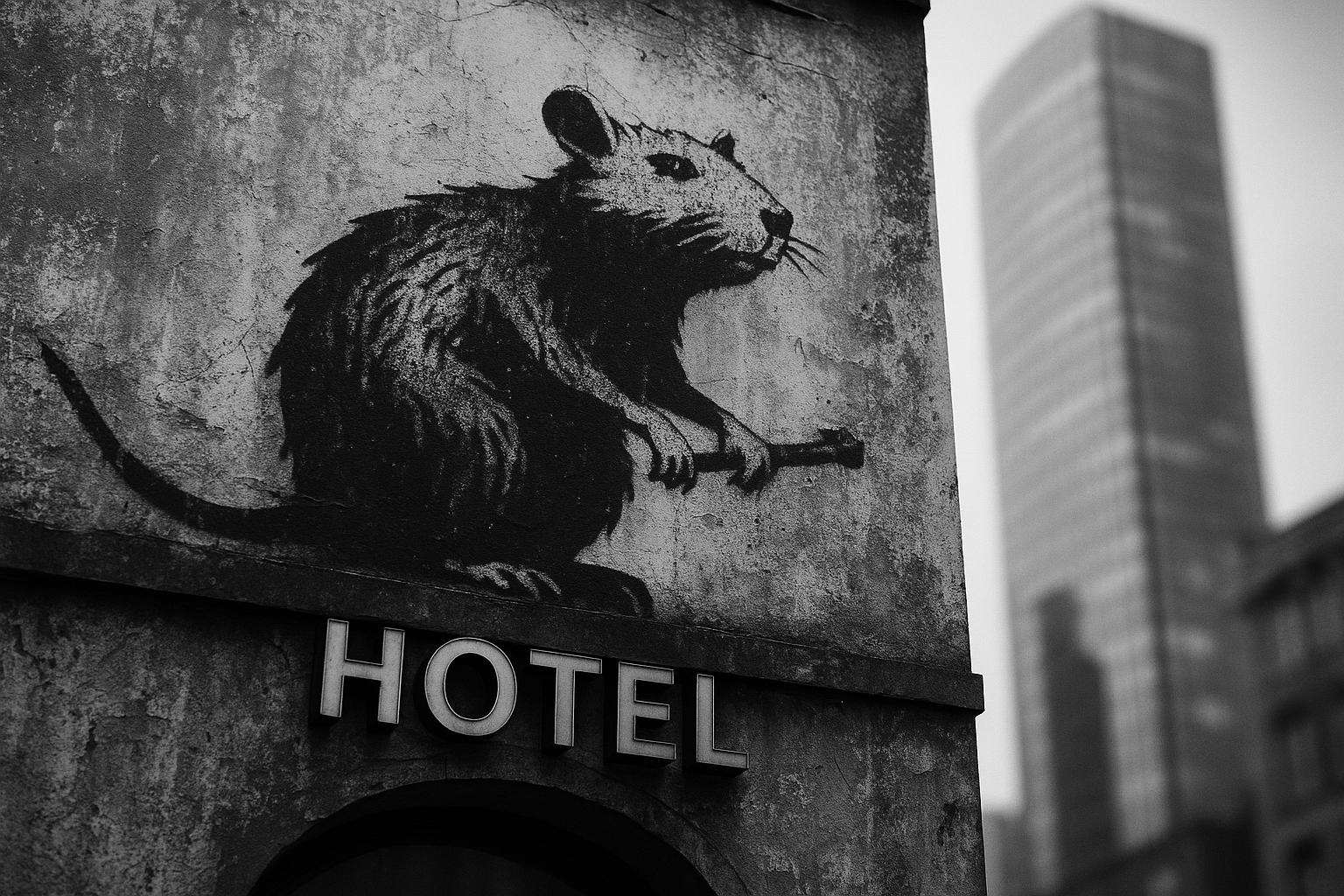art'otel London Hoxton arrives like a fresh pulse in Shoreditch: a 27‑storey slab of glass and colour that pairs the slick minimalism of contemporary hotel design with an unapologetically streetwise art programme. The Independent’s review praises the hotel’s sweep of skyline views, bold D*Face commissions and lively food-and-drink offering — features the hotel leans on to present itself as a cultural hub in the capital’s creative quarter. According to the operator’s materials, the property has 357 rooms and an on‑site gallery intended to stitch programming and hospitality together into a single guest experience.
The site’s provenance helps explain the hotel’s aesthetic. Built on the footprint of The Foundry — a once‑notorious arts space associated with early 2000s street art — developers preserved two vintage Banksy murals that were uncovered during construction and have been re‑installed above the hotel entrance. Londonist and the hotel’s own publicity both recount how the works, a giant rat and a televised‑smash motif, were temporarily concealed before being revealed again; their survival sits uneasily, and yet narratively, alongside the new tower’s polished surfaces. Radisson, which announced the opening in April 2024, frames the re‑display and the D*Face collaboration as emblematic of the building’s intention to marry commercial hospitality with Shoreditch’s creative legacy.
Inside, the public spaces are theatrical: escalators framed by comic‑book murals, neon sculptures and oversized canvases give circulation areas the energy of a pop gallery. The hotel’s Signature Artist, D*Face, has been given licence over large swathes of the interior, and his stylised, graffiti‑punk satires act as a unifying visual language throughout the building. The Independent’s reviewer found the effect welcoming rather than intimidating, and the hotel itself promotes rotating exhibitions in its 135m² gallery as part of an ongoing events programme.
Rooms are consistently described as a strong point. Architectural choices mean almost every room benefits from a generous London outlook; even the smallest categories are described as roomy by central‑London standards. Fixtures and small luxuries are part of the package: Illy coffee machines, Kevin Murphy toiletries, occasional record players and sketch pads appear in guest rooms, while many walls are punctuated by D*Face prints and colourful soft furnishings that nod to the hotel’s wider aesthetic. The combination of daylight, neutral lines and curated art is presented as a foil to the more flamboyant public areas.
Leisure facilities are comprehensive for an urban lifestyle property. There is a heated indoor pool with adjoining spa facilities, a sauna and steam room, and a skyline gym sited near the top of the building. The hotel offers wellness programming from yoga classes to targeted facial and foot treatments described in the guest literature as addressing “focus, sleep, movement and environment.” These elements are foregrounded both in the hotel’s promotional material and in press coverage as part of its positioning as a place to both rest and keep active.
Dining is centred on The Brush East London Grand Café, an all‑day venue that spans ground and first floors and opens onto a year‑round terrace. Menus lean to contemporary European and British dishes — breakfast pastries and classics such as eggs Benedict sit alongside sharable small plates, steaks and seasonal mains — and weekend DJ sets and brunch programming are advertised as staple draws. The hotel’s food page cites Executive Chef Ryan Matheson as shaping seasonal menus and local collaborations that tie the restaurant to the building’s wider cultural calendar.
Service and practicalities are pitched at travellers who want polished, attentive staff within a buzzing neighbourhood setting. The Independent notes staff willingness to accommodate requests and a generally personable approach at reception and concierge. Accessibility features and family provisions are available, and the property markets itself as pet‑friendly; booking platforms add the practical detail that pets are permitted subject to a per‑stay fee, while the hotel’s own communications emphasise family offers and meeting spaces. The Independent also points out that, despite the dog‑friendly policy, animals are not permitted in the restaurant.
For travellers who plan logistics, the hotel sits a short walk from Old Street station and is placed for easy access to Shoreditch’s markets, galleries and nightlife. Radisson’s press release states the hotel opened on 24 April 2024; standard operational details published in reviews and reservation listings show check‑in from 15:00 and check‑out by 12:00. The property publishes contact and booking information through its own site and through Radisson’s channels, which the operator encourages for rewards and live availability.
The art‑first concept will not please everyone: there are broader, ongoing conversations about how redevelopment, preservation and commercialisation intersect in Shoreditch. Commentators have taken the Banksy reinstatement as a symbolic moment in that debate — a piece of grassroots street art reframed as a feature within a large hotel. Radisson and the hotel present that reframing as a cultural conservation, and for visitors who want an upbeat, contemporary East London base — rooms with rare rooftop views, an active events programme and bold public art — the hotel delivers. For those seeking the patina and formality of a historic London grand hotel, it will feel intentionally of its moment.
📌 Reference Map:
##Reference Map:
- Paragraph 1 – [1], [3], [4]
- Paragraph 2 – [6], [3], [4], [1]
- Paragraph 3 – [1], [3]
- Paragraph 4 – [1], [3], [2]
- Paragraph 5 – [1], [3], [4]
- Paragraph 6 – [1], [5], [3]
- Paragraph 7 – [1], [7], [3]
- Paragraph 8 – [4], [1], [7]
- Paragraph 9 – [6], [4], [1]
Source: Noah Wire Services
